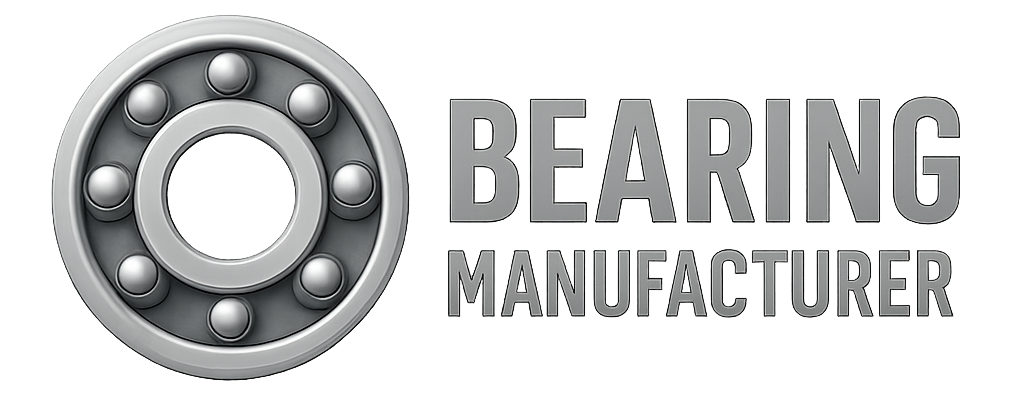A one way bearing plays a critical role in machines that require directional control and torque transmission. Commonly used in automotive systems, conveyors, and industrial equipment, these bearings allow rotation in one direction while preventing movement in the opposite direction. This article focuses on one way needle roller bearings, a compact and efficient variant widely used in high-performance applications.
What Is a One Way Bearing?
A one way bearing—also known as a freewheel or overrunning clutch—is a mechanical component that permits rotation in one direction only. Among its different configurations, the one way needle roller bearing is particularly popular due to its compact design and high torque transmission efficiency. It uses cylindrical needle rollers to achieve directional control with minimal friction and space requirements.
Construction and Working Principle
1. Core Components
-
Needle Rollers
These are thin, cylindrical elements arranged parallel to the shaft. They offer a large contact surface, helping distribute load evenly and enhance torque transmission. -
Inner and Outer Rings
The bearing consists of an inner ring (usually the shaft) and an outer ring (typically the housing). The needle rollers are positioned between these rings. -
Cam or Ramp Mechanism
This geometry is what enables directional locking. When rotating in the permitted direction, the rollers glide freely along the ramp. When force is applied in the opposite direction, the rollers wedge tightly between the rings, locking the motion.
2. Engagement and Disengagement Mechanism
-
Automatic Engagement
When reverse rotation occurs, the rollers immediately engage with the cam profile, locking the bearing to prevent backward movement. -
Automatic Disengagement
When the rotation returns to the permitted direction, the rollers release automatically, allowing smooth and frictionless motion once again.
How Does It Work in Real Applications?
1. Torque Transmission
-
In the allowed direction, needle rollers move freely, enabling efficient torque transfer between connected components.
-
This ensures smooth operation in systems like starter motors or conveyors, where directional accuracy and low friction are crucial.
2. Locking Against Reverse Motion
-
In the opposite direction, the rollers wedge and lock the system.
-
This prevents reverse movement, safeguarding machinery from potential damage due to backlash or unintended rotation.
3. Instant Response
-
The automatic locking/unlocking ensures fast response to load changes.
-
This is especially valuable in dynamic environments like industrial automation, where quick shifts in motion direction are frequent.
Typical Applications of One Way Bearings
-
Conveyor Systems
Prevent rollback, ensuring smooth and consistent material handling. -
Starter Motors (Automotive)
Engage the engine crankshaft during startup, then disengage immediately to prevent reverse torque. -
Industrial Machinery
Used in textile machines, packaging lines, and printing presses for precise motion control and directional accuracy.
What Makes One Way Bearings Effective?
1. High Load Capacity
-
The distributed contact area of needle rollers allows them to support significant loads while maintaining smooth operation.
2. Compact and Efficient Design
-
Ideal for limited-space installations without compromising on performance.
-
Common in tight assemblies like automatic transmissions or small motor drives.
3. Durable and Reliable
-
Made from high-grade, hardened steel to resist wear and extend lifespan.
-
Withstands high loads and frequent cycles with minimal degradation.
4. Low Maintenance Requirements
-
Reduced lubrication needs compared to traditional bearing types.
-
Simple construction allows for easy inspection and replacement.
5. Rapid Engagement and Safety
-
The instant locking mechanism protects mechanical systems from failure due to slippage or reverse movement.
-
Enhances operational safety and equipment longevity.
Maintenance Best Practices
To ensure optimal performance and extend service life:
-
Lubrication: Use manufacturer-recommended grease or oil at scheduled intervals.
-
Routine Inspection: Check for signs of wear, contamination, or noise regularly.
-
Cleaning: Keep bearings clean, especially in dusty or high-debris environments, to prevent jamming or misalignment.
Conclusion
Understanding how a one way needle bearing works—especially its automatic locking mechanism, torque transmission, and direction-specific functionality—is essential for selecting the right bearing in engineering projects. Whether you’re designing a conveyor system, maintaining a starter motor, or sourcing bearings for industrial automation, the right one way bearing enhances efficiency, safety, and longevity.
Looking for premium-quality one way bearings?
Contact our expert team today to find the perfect bearing solution for your application.
